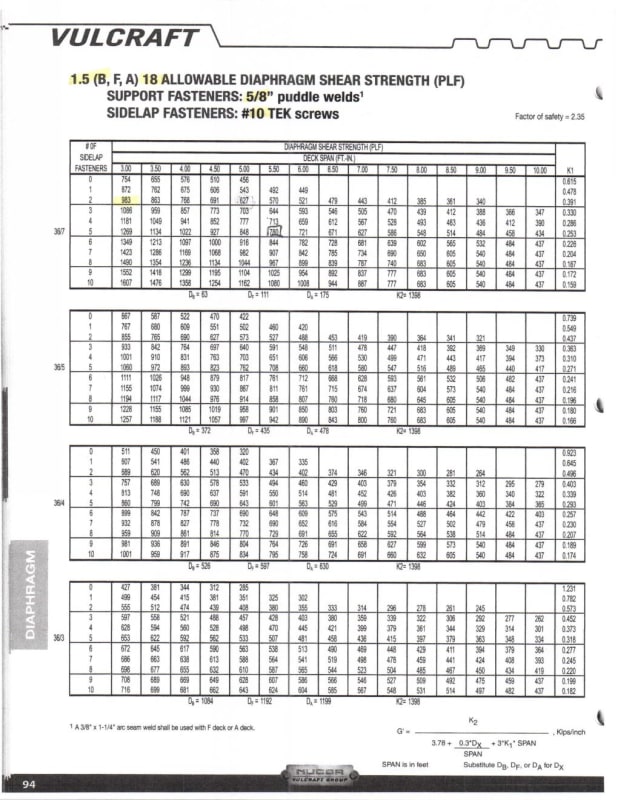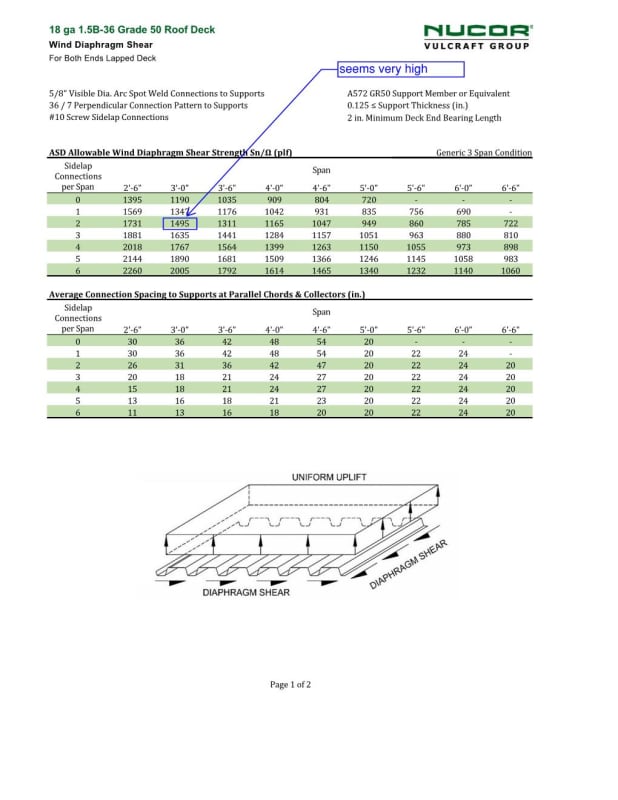SteelPE
Structural
- Mar 9, 2006
- 2,759
I am currently trying to rough out the design of a small single-story retail building. I am check the diaphragm and I am calculating a demand of roughly 850 plf (allowable) which is quite high. Currently, due to loading issues, I have open-web steel joists spaced at 3'-0"+/- o.c. I opened up my old Vulcraft deck Catalog and can see that an 1 1/2" 18 ga deck has the capacity of 983 plf (using 5/8" dia puddle welds and 2-#10 TEK fasteners per span).

All is fine.... and I am not quite comfortable stressing the diaphragm this much (even though it will work).
So, on a whim, I think my information is old and I go to the manufacturer website to figure out if this information has been updated.... I find that there is now a calculator for deck diaphragm capacity and I run my deck through the calculator and it returns a capacity of 1495 plf

I am not sure why there is such a drastic change in capacity. The only thing that pops up in my mind is that is seems like they are using decking material that has Fy= 50ksi vs the old decking that used to be Fy= 33ksi. Is there such a reason for this drastic change? I just want to make sure I am comparing apples to apples here.

All is fine.... and I am not quite comfortable stressing the diaphragm this much (even though it will work).
So, on a whim, I think my information is old and I go to the manufacturer website to figure out if this information has been updated.... I find that there is now a calculator for deck diaphragm capacity and I run my deck through the calculator and it returns a capacity of 1495 plf

I am not sure why there is such a drastic change in capacity. The only thing that pops up in my mind is that is seems like they are using decking material that has Fy= 50ksi vs the old decking that used to be Fy= 33ksi. Is there such a reason for this drastic change? I just want to make sure I am comparing apples to apples here.
